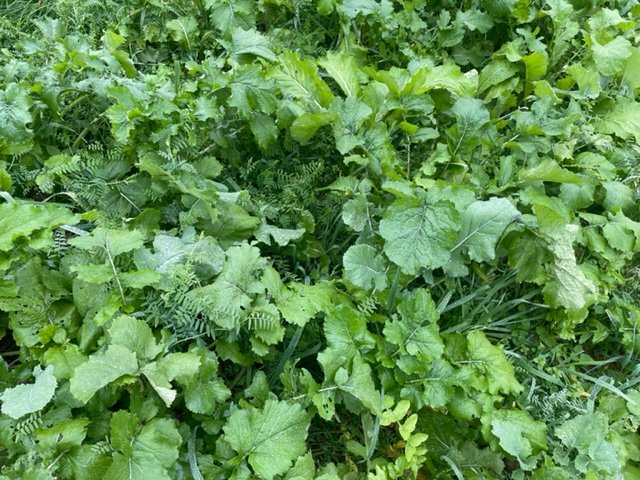Soil Health Friday
Over the years “soil health” has been thrown around and can be undeniably polarizing. There is a massive movement from the garden to agriculture space that often divides those who are no-till vs. those who till. In the food plot space, it may be even more polarizing as many squeeze their finances to afford a no-till drill and steel roller-crimper for a part-time hobby.
Now, before we think this is going to be an article that is all pro-tillage, I hate to disappoint you, but it won’t. I also will highlight my hypocrisy, as I am the gardener and food plotter who has dreamed of the day of owning a no-till drill and has preached about no-till for years.
What I have learned is there is a continuum in the soil health, farming, gardening, and food plotting industry that everyone falls on, and to impact soil health – we need to appeal to the masses and just get folks started.
I want this article to be focused on inclusion and the importance thereof. The goal of find a way to support all people in the pursuit of better soil conservation and soil health. To achieve greater inclusion, I think we must start by identifying the ideal system (at least based on what we know today).
The ideal system would maximize the six soil health principles. (noble research institute cited below). A no-till drill to reduce disturbance, keeping thatch on the ground, using diverse cover crop mixes (Vitalizeseed.com), etc. will help to maximize these efforts.
The six soil health principles are:
Know Your Context
Cover the Soil
Minimize Soil Disturbance
Increase Diversity
Maintain Continuous Living Plants/Roots
Integrate Livestock
So, let’s talk tillage. What if a guy will not be interested in soil health if he can’t disc or till? Do we just give up on that cohort? Or can we work together to explain the damage of tillage, chemical fallowing, etc., and possibly get them to consider a form of conservation tillage? I will take the latter and find a plan that works for that grower’s context.
Conservation tillage is light tillage that leaves 30% or greater thatch on the top of the surface of the field. Some might think of vertical tillage as a popular means of conservation tillage, for example.
My theory is that if we can be inclusive and teach all about the principles of soil health and just get someone started, we can fine-tune the processes and work towards idealism later.
To be clear, we know that tillage causes damage to fungal networks, and soil aggregates, and pumps oxygen into the system which overstimulates our microbes and can facilitate oxidation reactions that tie up our nutrients. A heavy tillage system, without cover crops and huge reliance on inputs is destined for degradation of the soil profile. Similarly, no-till without diverse cover crop mixes, crop rotations, etc. will plateau in its benefits. This brings us back to the 6 soil health principles, the more of these we involve in our system the faster our soil’s potential is realized.
At Vitalize Seed we want everyone to feel more educated and confident in implementing a soil health plan that works for the growers’ goals on their slice of heaven. Each year working towards fewer synthetic inputs, less disturbance, more diversity, and better healthier soils. We have years of experience in testing our mixes in no-till methods, and we know that we can reduce to eliminate the need for synthetic inputs by taking advantage of biology and nutrient cycling in our wildlife pastures and gardens, using VitalizeSeed diverse, well-balanced mixes. We hope you will give building soil a try! Enjoy the journey and build better soils!
AT

